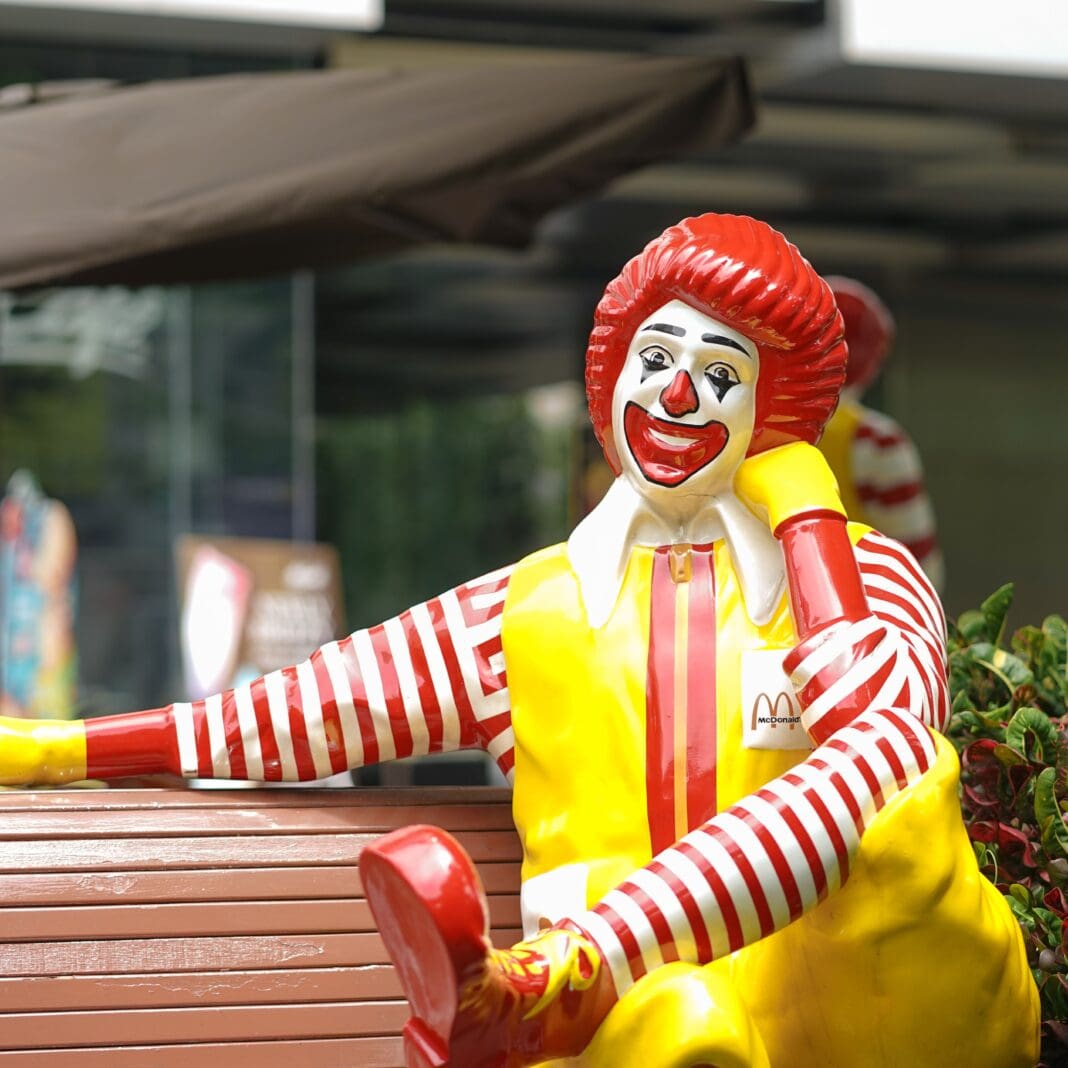Once a beacon of fast food joy, Ronald McDonald’s absence has left many wondering about the fate of this iconic clown. From his vibrant red hair to his oversized shoes, Ronald was more than a mascot; he was a cultural phenomenon. Yet, his disappearance was not sudden but a culmination of various factors that reshaped his role within McDonald’s and the broader cultural landscape.
1. The Creepy Clown Phenomenon
The disturbing ‘killer clown’ trend that emerged in 2016 significantly impacted Ronald’s public image. What started as a series of pranksters dressing as eerie clowns to scare the public evolved into a global phenomenon, creating a wave of unease and fear around clowns. This cultural shift made Ronald’s cheerful and once-beloved image seem out of place and potentially frightening, leading to his gradual disappearance from advertising and public events.
During this time, Ronald McDonald was pulled from many of McDonald’s promotional activities. The brand was mindful of the wider societal fears, choosing to reduce Ronald’s visibility to avoid adding to the scare. This decision was influenced by incidents worldwide where clowns, once symbols of laughter and joy, became figures of terror, inadvertently dragging Ronald along with them into the shadows of cultural fear.
The ‘creepy clown’ trend coincided with popular media portrayals of malevolent clowns in films and literature, reinforcing the negative perceptions. This alignment of real-world events and entertainment narratives created a perfect storm, compelling McDonald’s to reconsider their mascot’s role, focusing on community safety and brand image.
2. Shift in Marketing Strategy
Over the years, McDonald’s marketing strategies evolved to better align with changing consumer preferences and demographics. The global giant shifted its focus towards a more mature audience, promoting coffee, healthy meal options, and upscale restaurant features. This shift meant that Ronald, traditionally aimed at attracting children, was less relevant to the brand’s new direction, which now favored more contemporary and less character-driven marketing approaches.
As McDonald’s adapted to the fast-paced, health-conscious consumer landscape, it began to emphasize quality ingredients and ethical sourcing, distancing itself from the fast-food stereotypes that Ronald once embodied. The mascot’s association with unhealthy eating and child-targeted advertising became a liability, stirring public health and nutrition debates.
Furthermore, digital marketing and social media campaigns began to take precedence, offering McDonald’s the ability to tailor more specific and diverse messaging that could reach adults and children alike without relying on a single mascot. This led to a more segmented marketing strategy where Ronald no longer fit the broad branding vision.
3. Public Health Criticism
Another significant reason for Ronald’s retreat from the limelight was the increasing scrutiny over fast food’s role in global health issues like obesity and diabetes. Health activists and medical professionals frequently criticized McDonald’s for using Ronald to appeal to children, arguing that it encouraged poor dietary habits among the most vulnerable populations.
This criticism was not isolated to anecdotal opinions but was backed by research and widespread advocacy campaigns calling for a more responsible approach to food marketing aimed at children. The pressure mounted, with calls for Ronald to be retired permanently, arguing that his continued presence was at odds with public health initiatives.
As a response, McDonald’s has increasingly highlighted their contributions to community health, such as offering more balanced meal options and supporting active lifestyles. This rebranding effort, aimed at shedding the fast-food chain’s old image, made Ronald’s character, which symbolized the old McDonald’s, an uncomfortable fit for the new health-focused branding.
4. The Role of Ronald McDonald House Charities
Despite his reduced presence in advertising, Ronald McDonald has not vanished entirely from the public eye. His legacy continues through the Ronald McDonald House Charities, an organization that provides essential support for families with ill children. These charity houses offer a place for families to stay close to hospitals, alleviating the financial and emotional strain during difficult times.
This aspect of Ronald’s role has garnered positive attention, shifting the focus from his commercial origins to a more humanitarian effort. The charity work helps maintain a favorable image of Ronald, dissociating him from the commercial mascot and redefining him as a symbol of corporate responsibility and family support.
The success and impact of Ronald McDonald House Charities underscore a different kind of legacy for the clown, one that resonates with values of care and support rather than just consumerism. It’s a repositioning that aligns with contemporary social values and McDonald’s branding as a community-oriented company.
5. Cultural Shifts in Mascot Usage
The role of mascots in advertising has transformed significantly over the decades. In the era of digital marketing and brand personalization, traditional mascots like Ronald McDonald have seen a decline in importance. Brands are increasingly turning to real-time marketing techniques and influencer collaborations that resonate more effectively with modern audiences.
These changes reflect a broader cultural shift towards more authentic and relatable marketing practices. While mascots were once central to brand identity, they now play a reduced role, with brands opting for strategies that involve direct interaction and engagement with their audiences.
In this new marketing era, Ronald’s traditional role as a static mascot does not carry the same appeal or effectiveness. This shift has been pivotal in his phase-out, as McDonald’s aims to stay relevant and appealing in a fast-evolving consumer landscape.
In conclusion, the disappearance of Ronald McDonald from the frontlines of McDonald’s marketing is a multi-faceted issue that spans cultural shifts, marketing strategies, and public health concerns. His transition from a ubiquitous mascot to a more subdued role in charitable efforts marks a significant pivot in how brands adapt to changing societal norms and consumer expectations. Though his red shoes are less visible, his impact, particularly through charitable work, continues to leave a positive footprint. This evolution from commercial symbol to charity ambassador reflects a broader trend of brands moving towards more socially responsible and less character-driven marketing strategies.

